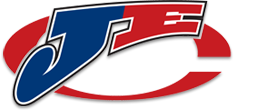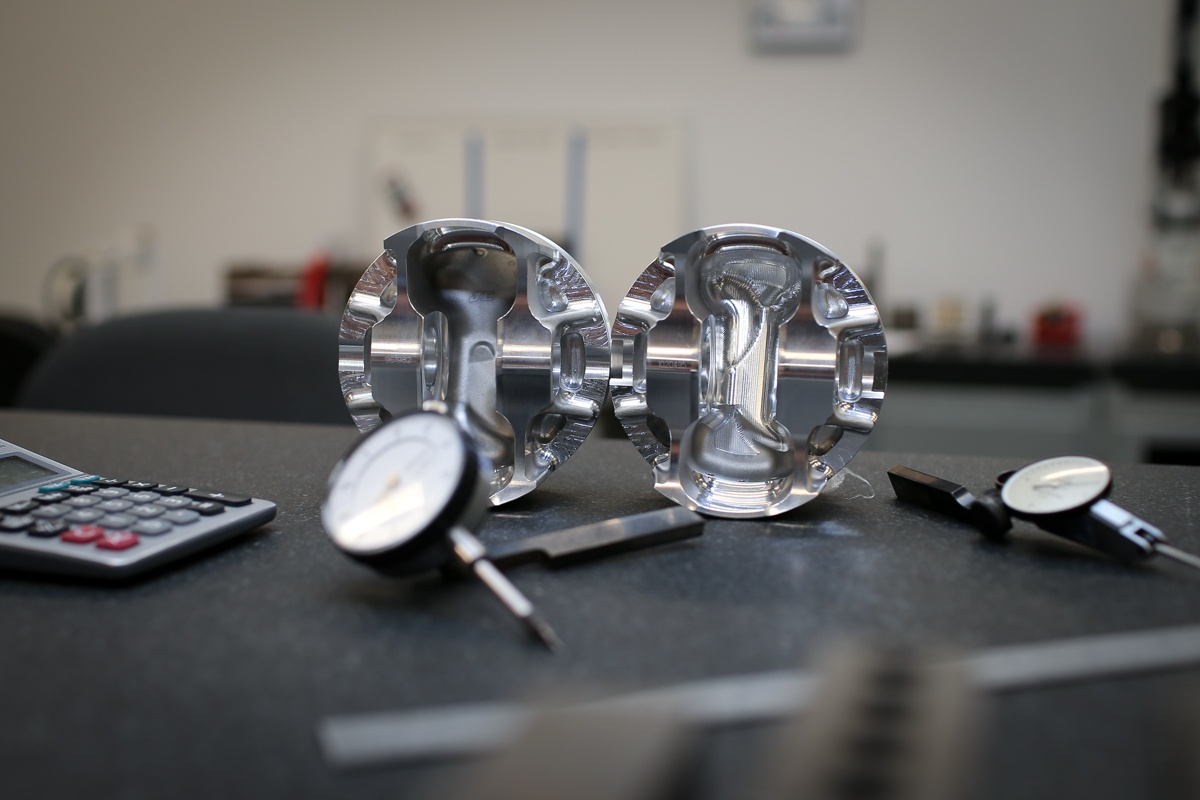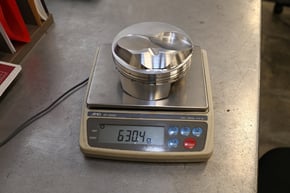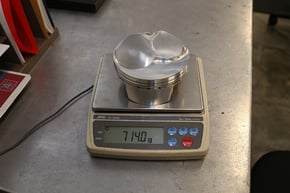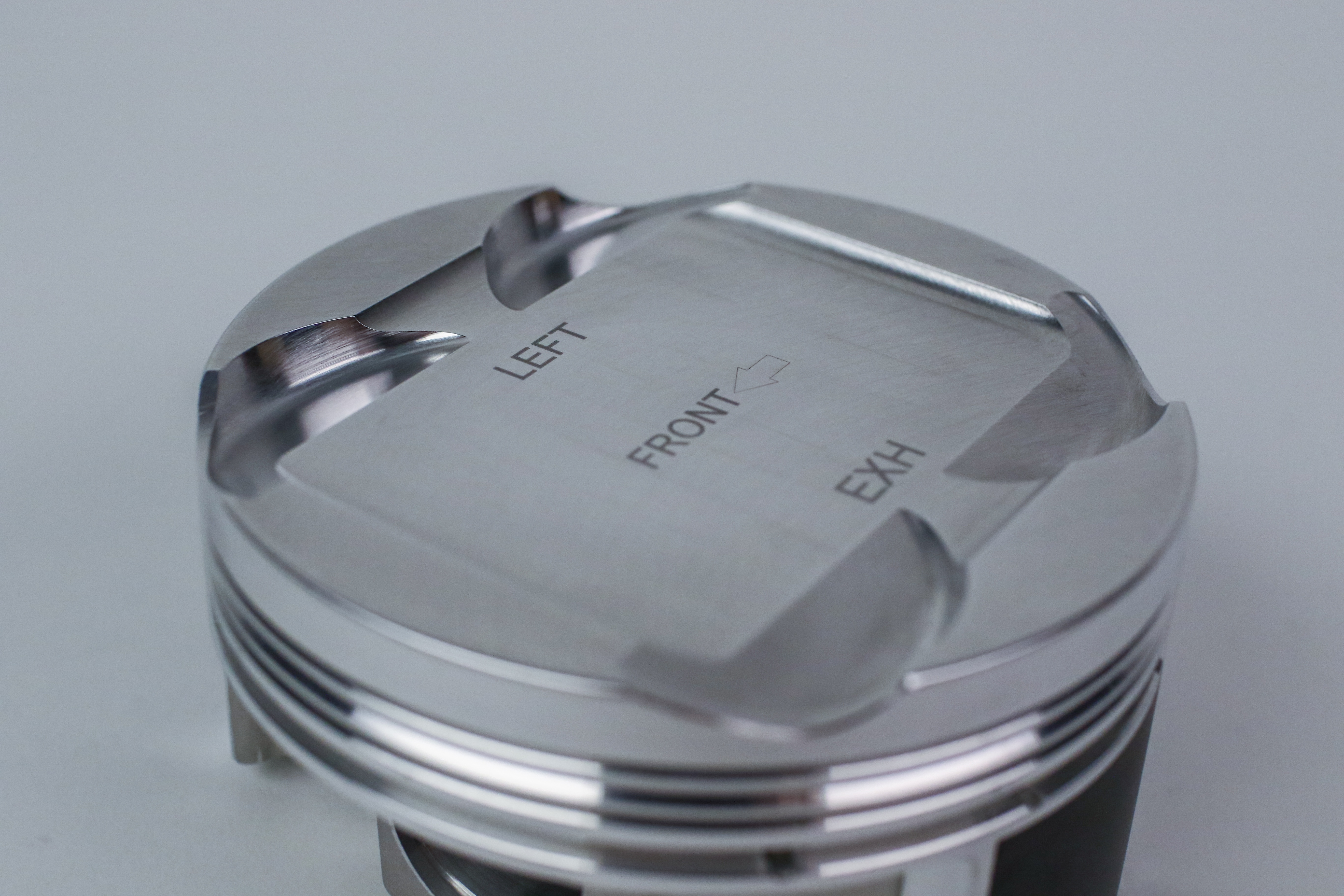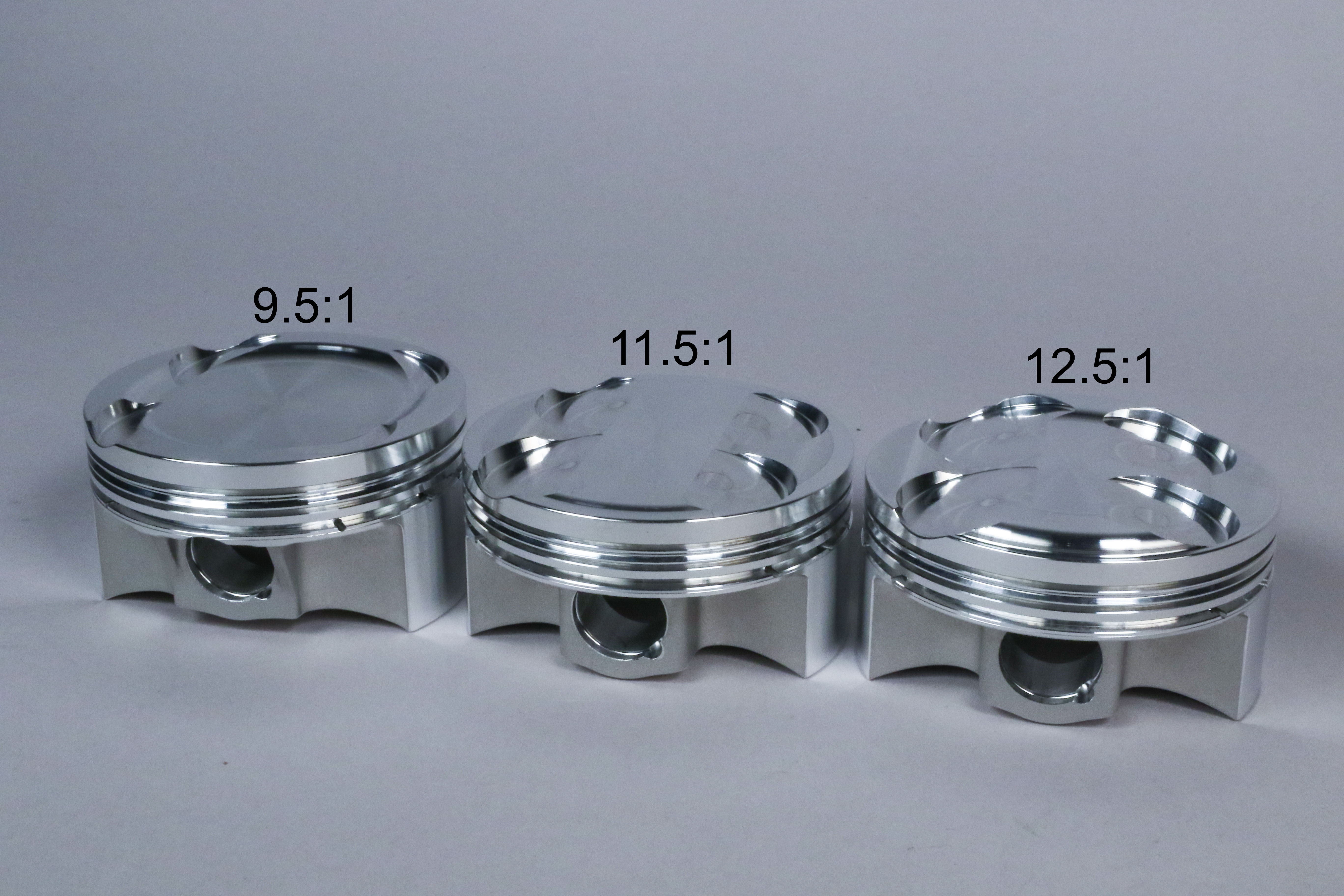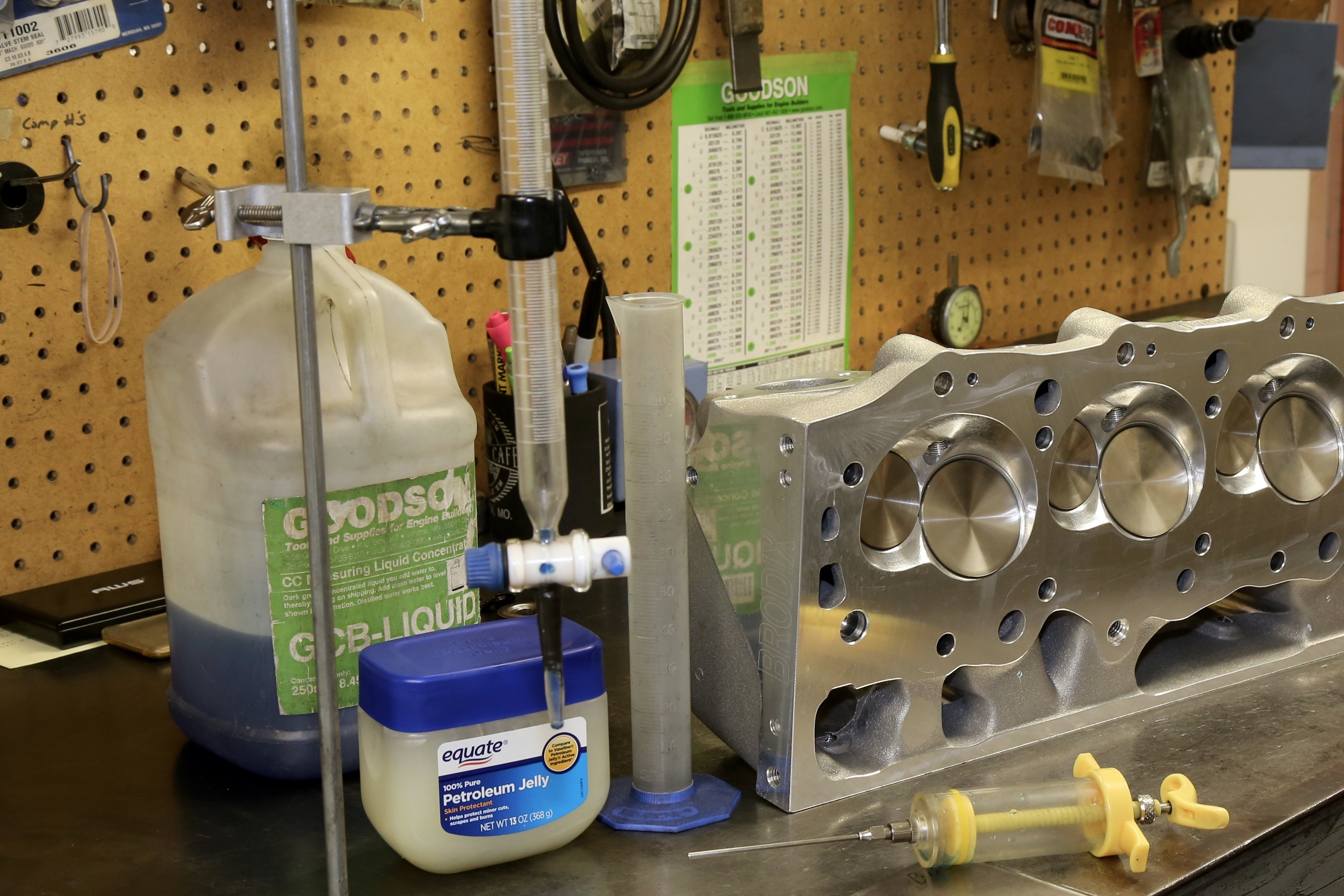A new clean-sheet Forged Side Relief piston for big-block Chevys from JE Pistons offers a significant weight reduction, while improved design elements strengthen the overall piston construction for improved durability.
Prevously featured on EngineLabs.com.
Conventional wisdom often dictates that designing a lighter engine component will sacrifice stiffness or strength, and those qualities are necessary when building endurance or high-stress motors. In fact, today’s engine builders are demanding stiffness—even at the expense of weight savings in certain engine parts, such as the valvetrain. That’s why pushrods are growing extremely obese, and heavier steel materials are making a comeback in rocker-arm design.
But lighter and stiffer aren’t physical properties that have to be polar opposites. A new clean-sheet Forged Side Relief (FSR) piston for big-block Chevys from JE Pistons offers a significant weight reduction, while improved design elements strengthen the overall piston construction for improved durability.
The new piston features lateral gas ports and is available in popular shelf-stocked bore sizes from 4.500-inch to 4.625-inch. Dome volumes range between 40cc to 49cc, though any custom application is also available. When used with most performance open-chamber BBC cylinder heads, the engine builder can dial in a compression ratio from 13:1 up to 18.5:1.
What’s a Forged Side Relief?
JE engineers pared down the weight significantly with a dedicated FSR forging that reduces the skirt-width area on each side of the piston parallel to the wrist pin. In addition to a lighter rotating weight when compared to earlier generation pistons, there is less contact area with the cylinder wall to reduce friction
“The trend in high-performance pistons has been going towards more bracing, with more stiffness as a result,” explains JE engineer Clayton Stothers. “This FSR was compared against the full-round version of our tall-dome BBC forging, so we used that as the benchmark.”
This design strategy allows JE to relocate the wrist-pin supports and narrow the pin length from 2.930-inch to 2.500-inch, eliminating 26 more grams of weight. Additional weight savings come from precise 3D milling under the crown that peels off unwanted mass but doesn’t invade critical areas of strength in the piston top.
“We only have one forging that will cover our entire range of BBC pistons, and all have different crown designs,” says Stothers. “In order to optimize the weight with each different compression ratio and crown design, we were able to design a different undercrown for each part number.”
Finite Element Analysis (FEA)
| Laterial Gas Ports |
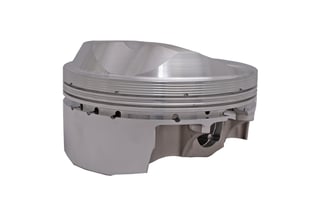 |
JE offers the new FSR big-block Chevy pistons with lateral gas ports designed to increase ring seal. A slot is milled into the upper edge of the top ring groove to direct combustion pressure behind the ring and help force the ring face against the cylinder wall. This dynamic is very effective in engines that produce high pan vacuum, but will help improve cylinder sealing in all applications. Gas ports can also be drilled from the top of the piston crown as a custom order from JE Pistons, but this is generally a race-only option. The size and number of the holes determine the amount of pressure that will be exerted on the backside of the top ring. “The lateral gas ports have been the standard in higher performance sport compact and powersports pistons for years and we find that they give good results with less chance of being clogged, compared to the vertical ports,” says Stothers. |
Achieving the shorter wrist pin required extensive FEA computer modeling to determine required support structure of the pin towers. Numerous iterations were tested to analyze the location and magnitude of the stresses placed throughout the piston construction.
“FEA allows us to make very quick changes and make sure that the changes are having the desired effect without ever having to cut metal,” adds Stothers, adding that numerous connecting rods were evaluated to ensure aftermarket compatibility with the pin tower locations.
“This goes along with knowing the small-end width of the connecting rod because typically we run the pin-boss span as close to the rod as possible, giving the pin the most support. However, if ordering as a custom, it is always good to provide details of the connecting rod to make sure everything fits.”
The piston forgings are made from 2618 alloy and machined in a multi-staged process that includes CNC lathes and mills. The 3D undercrown profiling is performed on either a 3-axis or 4-axis milling machine.
“The main strategy in 3D milling is to take weight out where it isn’t needed,” explains Stothers. “In general, we will increase the crown thickness for high horsepower applications while also trying to meet the weight requirements set by the customer. The usage is also very important. For example, we will design a drag race piston differently than we would design a street car piston.”
Material and Construction
On the top side, JE leveraged its proven dome shapes with deeper valve pockets to clear high-lift camshafts or cylinder heads that have milled. The pistons are designed to work with most popular open-chamber heads that support intake valves up to 2.400-inch, including the Brodix Head Hunter series. The crowns are also finished to eliminate sharp edges that can create hot spots and touch off pre-ignition.
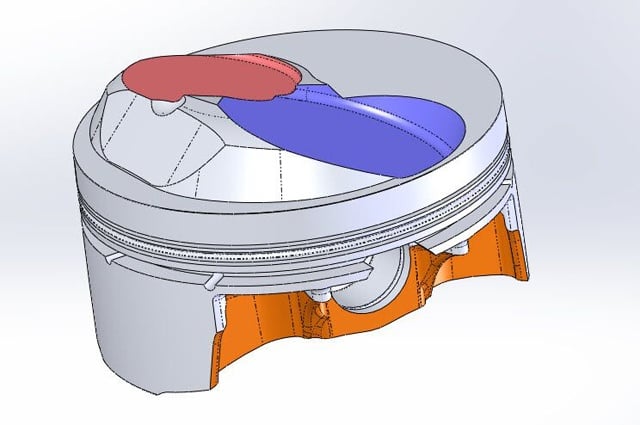
Most high-performance pistons are constructed of either 2618 or 4032 aluminum alloy. The main difference is the silicone content with 4032 having about 12 to 13 percent silicone and 2618 having less than one percent. The silicone in 4032 offers some desirable heat properties but can also make the piston more brittle. The 2618 alloy is more malleable and can support extreme loads without failure due to fracture.
“We find that 2618 is the optimum material to handle this type of application because of its superior material properties under the harsh working environments that these engines see,” says Stothers. “Because of the wide variety of uses that these pistons may see, 2618 is the safest material to withstand the abuse. Some customers may find that they want a lower CTE (coefficient of thermal expansion) or the higher wear resistance that is typical of 4032 but, at this time, we don’t see a large need in this application.”
With more engine builders demanding thinner and lower-tension piston rings, JE designed the new lightweight BBC piston with ultra-flat ring grooves. The standard ring package includes .043 steel gas-nitrided top ring, .043 Napier hooked second ring and 3.0mm low-tension oil ring. JE also machines an accumulator groove into the land between the first and second rings to help reduce pressure between those rings and minimize ring flutter.
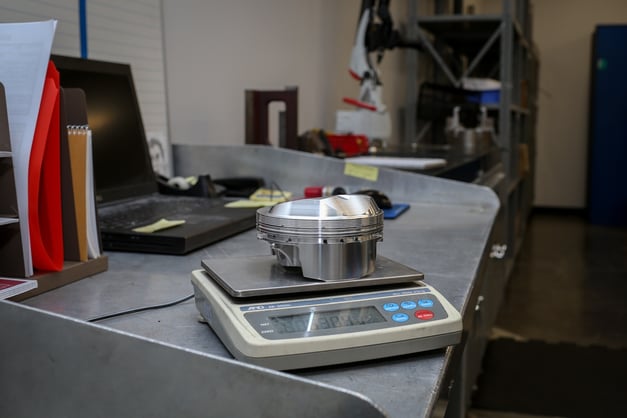
“We felt that for an off-the-shelf piston it was the thinnest ring we would use for a very universal market. In custom applications we can go thinner, if the customer requires,” confirms Nick DiBlasi.
Off-the-shelf options for the FSR big-block Chevy pistons include a wide range of bore sizes and compression heights to work with all the popular crankshaft strokes, including 4.000-, 4.250-, 4.375-, 4.500-, 4.625- and 4.750-inch, and rod lengths, including 6.385-, 6.480-, 6.535-, 6.700- and 6.800-inch. The pistons are compatible with both standard- and tall-deck applications. Custom options include non-standard bore sizes and friction-reducing or thermal coatings. All wrist pins are .990-inch diameter and constructed from .180-wall, case-hardened 5115 steel. They are secured with wire locks.
